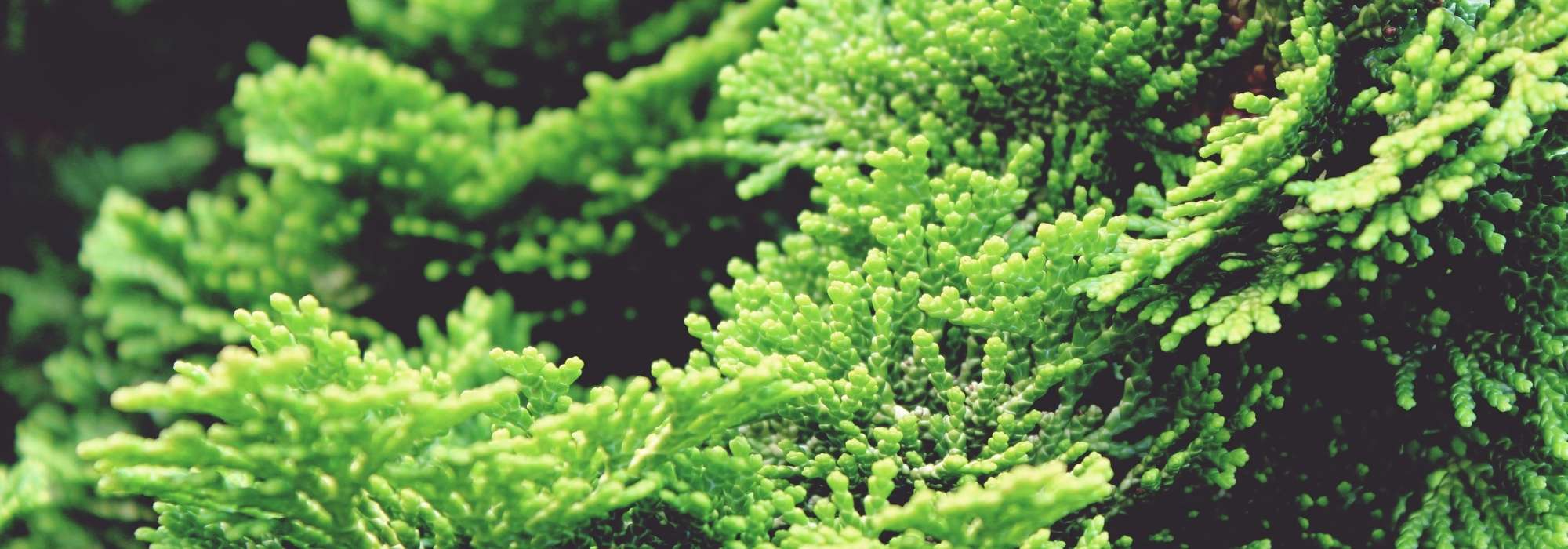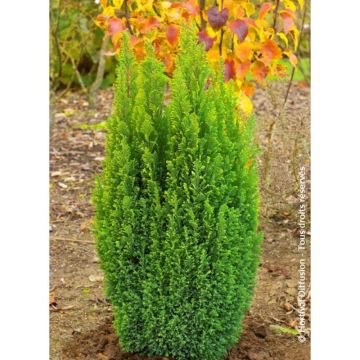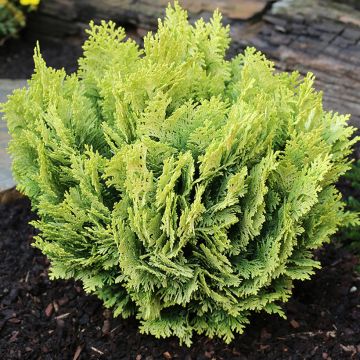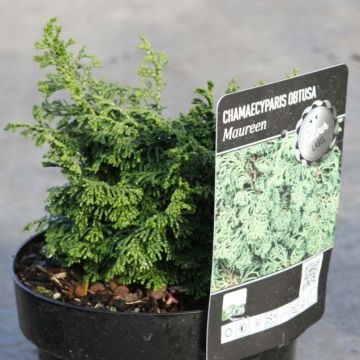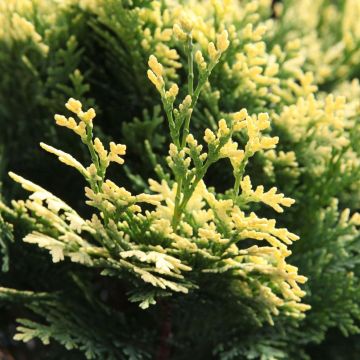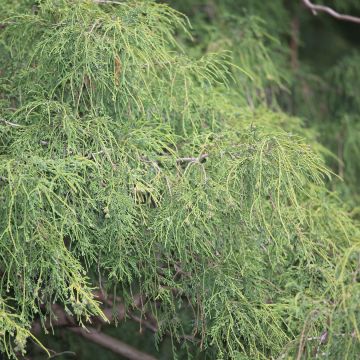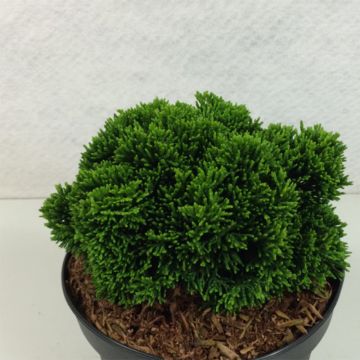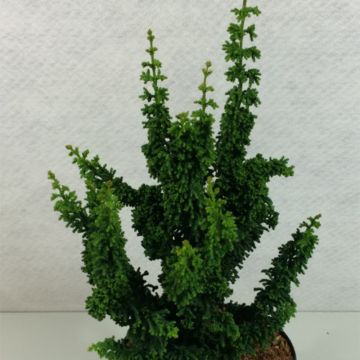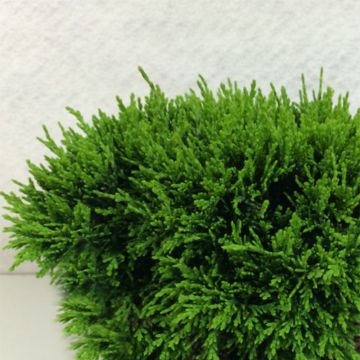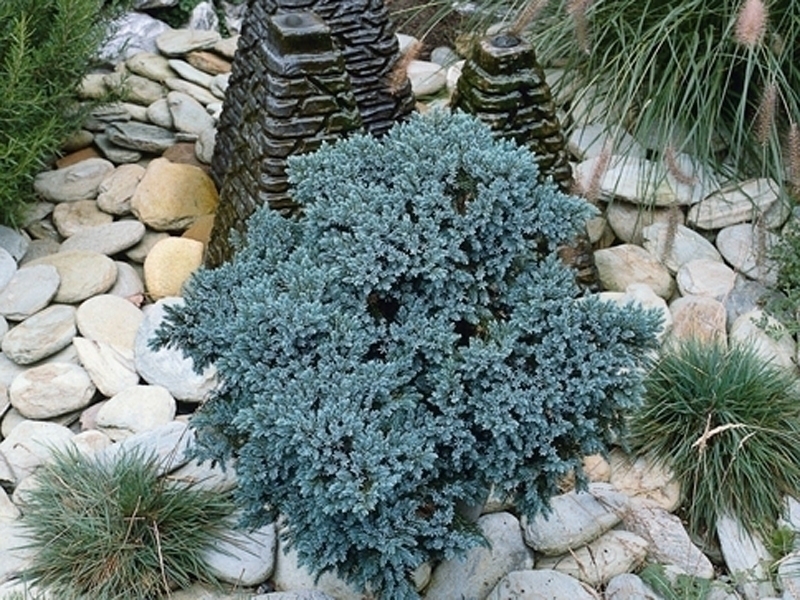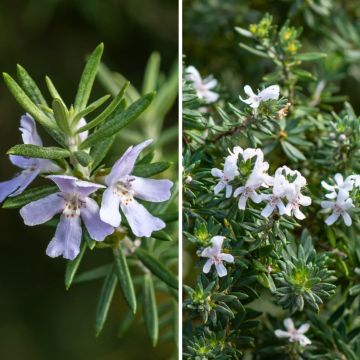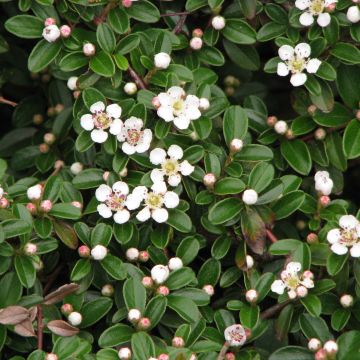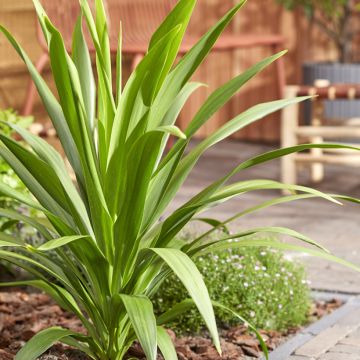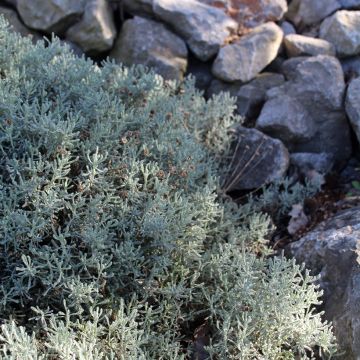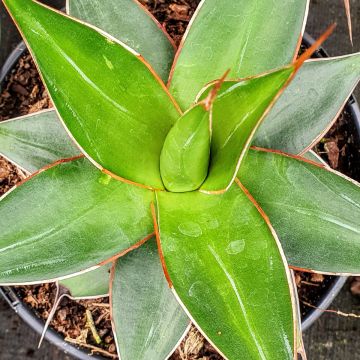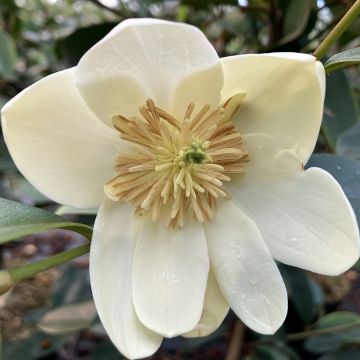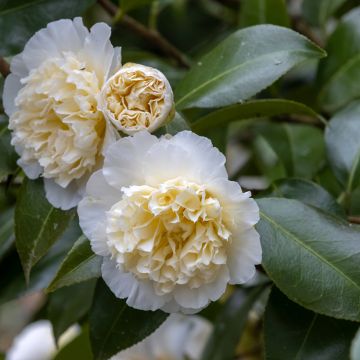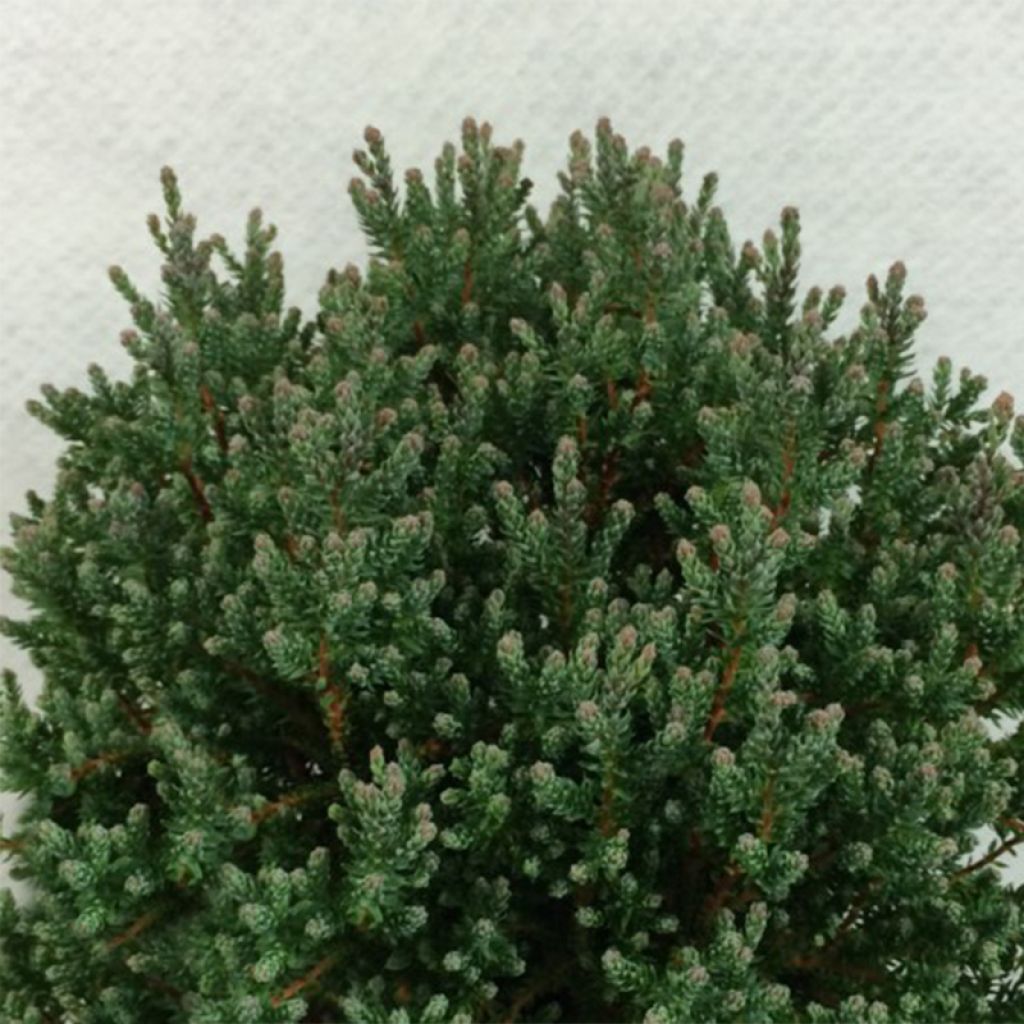

Chamaecyparis thyoides Blue Rock
Chamaecyparis thyoides Blue Rock
Chamaecyparis thyoides Blue Rock® 'Versent'
Atlantic White Cedar, Southern White Cedar, White Cedar
Let's wait for it to shoot before saying anything about it, for now it seems to be regrowing.
Henry BELMONT, 10/04/2016
Special offer!
Receive a €20 voucher for any order over €90 (excluding delivery costs, credit notes, and plastic-free options)!
1- Add your favorite plants to your cart.
2- Once you have reached €90, confirm your order (you can even choose the delivery date!).
3- As soon as your order is shipped, you will receive an email containing your voucher code, valid for 3 months (90 days).
Your voucher is unique and can only be used once, for any order with a minimum value of €20, excluding delivery costs.
Can be combined with other current offers, non-divisible and non-refundable.
Home or relay delivery (depending on size and destination)
Schedule delivery date,
and select date in basket
This plant carries a 24 months recovery warranty
More information
We guarantee the quality of our plants for a full growing cycle, and will replace at our expense any plant that fails to recover under normal climatic and planting conditions.

Would this plant suit my garden?
Set up your Plantfit profile →
Description
Chamaecyparis thyoides Blue Rock, also known as Atlantic White Cedar, is a very recent dwarf conifer with sumptuous foliage. It forms a compact ball with very fine and dense foliage, initially green-blue, turning to purple in winter. It grows very slowly, not exceeding 1.50 m (4 ft 11 in) in all directions at maturity. While it is perfect in rockeries and small spaces, this conifer also adapts remarkably well to container cultivation. It prefers a sunny or semi-shaded exposure and soil that remains moist, light and well-drained and is humus-rich and acidic.
Chamaecyparis thyoides is a very hardy species native to eastern North America, specifically from the coast of Maine to Florida. It belongs to the cypress family and is also called Atlantic White Cypress. In its natural environment, it can reach a height of 18 m (59 ft 1 in) and has a narrow conical habit. It has given rise to many cultivars with very variable habits and foliage.
The Blue Rock variety was introduced in 2012 by a Dutch nursery. It originated from a mutation that appeared on a branch of a specimen of Chamaecyparis thyoides 'Top Point', which was then propagated by cuttings. After 10 years, it forms a beautiful rounded bush, measuring 40 to 50 cm (15.7 to 19.7 in) in height, and 30 to 40 cm (11.8 to 15.7 in) in width. It could eventually reach a height of 1m (3 ft 4 in) to 1.5m (4 ft 11 in) after many years of cultivation. It grows slowly, at a rate of 4 to 5 cm (1.6 to 2 in) per year. This small conifer retains its juvenile foliage in the form of very short needles with blue highlights, without developing the scale-like leaves of the species. Its fine grey-green twigs are grouped in very small irregularly arranged fans on the branches. The interior of the ball consists of bare grey-green twigs. The foliage takes on magnificent plum to violet highlights in winter.
Chamaecyparis thyoides Blue Rock is a small, hardy and original conifer that will be perfect in the garden with its changing and beautifully coloured foliage. It is ideal for planting in pots on the terrace, and of course in rockeries. With its very slow growth and its round silhouette, which requires no pruning, it will work well alongside taller varieties with columnar, pyramidal or narrow conical habits. The architectural qualities of dwarf conifers naturally impose themselves in the design of a contemporary garden, which prefers the aesthetics of shapes, silhouettes and textures to flowers. These plants structurally anchor a bed, mark the paths and border the terrace, easily replacing the strong presence of trimmed boxwood. They serve as a setting for small roses, peonies, or airy grasses with very complementary forms. They can also be associated with ground cover plants such as aubrietas and cerastiums, as well as flowering shrubs. The key is to play with volumes and colours.
Chamaecyparis thyoides Blue Rock in pictures
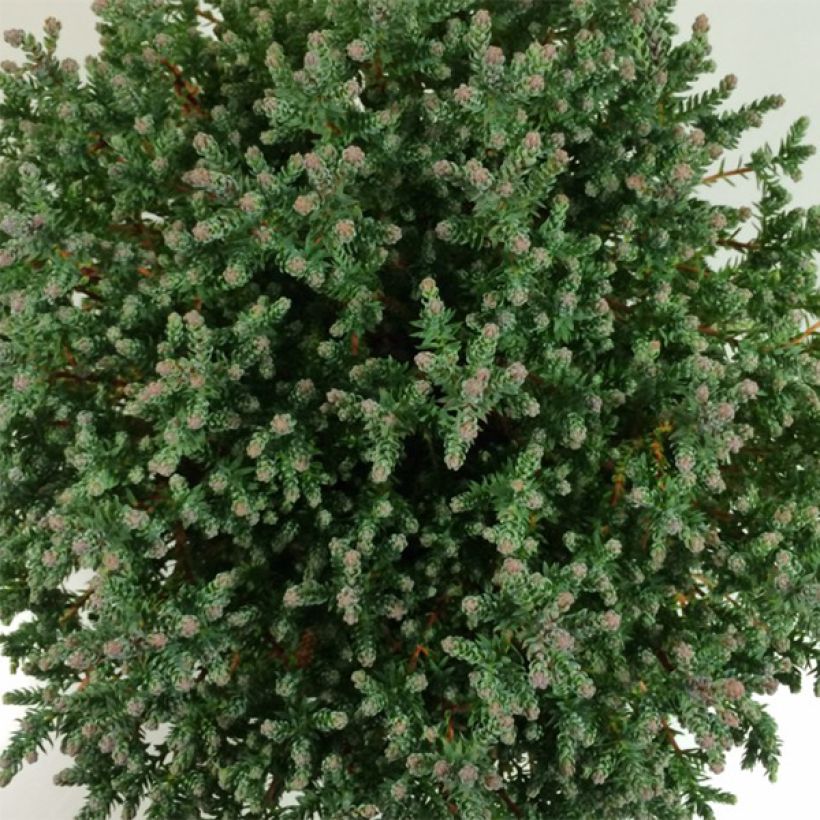

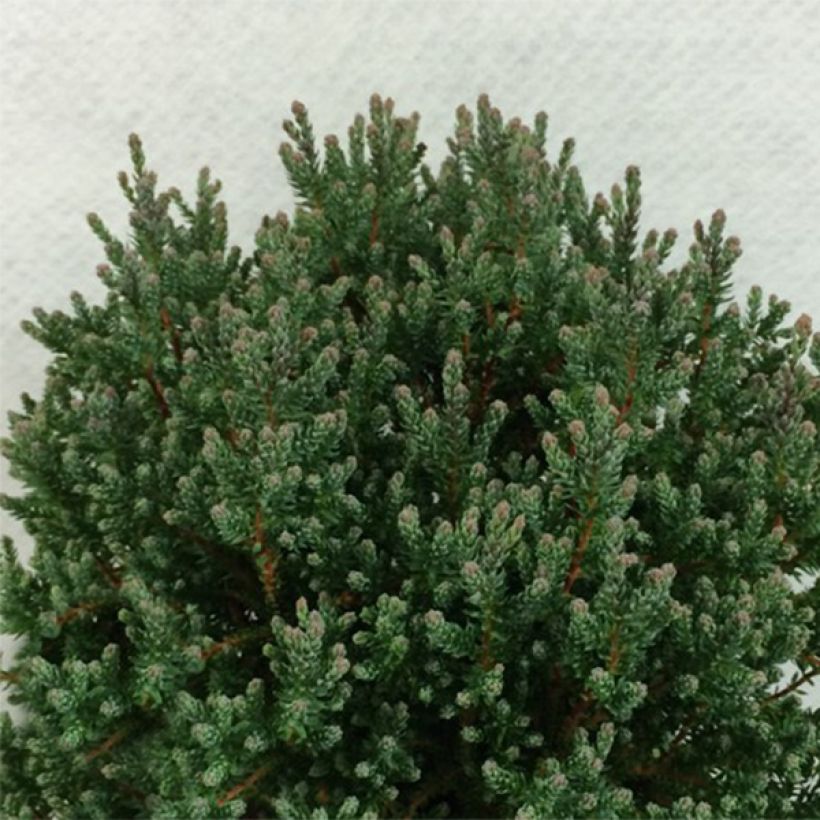

Plant habit
Foliage
Botanical data
Chamaecyparis
thyoides
Blue Rock® 'Versent'
Cupressaceae
Atlantic White Cedar, Southern White Cedar, White Cedar
Cultivar or hybrid
Other Chamaecyparis
View all →Planting and care
Chamaecyparis thyoides 'Blue Rock' is best planted from September to November and from February to June in fertile and moist soil, well-drained, light, neutral or slightly acidic and free of limestone. A humus-rich soil or a mixture of ericaceous soil will be perfect. Choose a sunny or semi-shaded location sheltered from prevailing winds. Soak the root ball well before planting. Add organic fertilizer at planting and water generously in the first years. Apply a special conifer fertilizer every year in April and weed the soil in summer. This conifer is sensitive to drought and heat, as well as drying winds. It does not require pruning.
Planting period
Intended location
Care
Planting & care advice
-
, onOrder confirmed
Reply from on Promesse de fleurs
Similar products
Haven't found what you were looking for?
Hardiness is the lowest winter temperature a plant can endure without suffering serious damage or even dying. However, hardiness is affected by location (a sheltered area, such as a patio), protection (winter cover) and soil type (hardiness is improved by well-drained soil).

Photo Sharing Terms & Conditions
In order to encourage gardeners to interact and share their experiences, Promesse de fleurs offers various media enabling content to be uploaded onto its Site - in particular via the ‘Photo sharing’ module.
The User agrees to refrain from:
- Posting any content that is illegal, prejudicial, insulting, racist, inciteful to hatred, revisionist, contrary to public decency, that infringes on privacy or on the privacy rights of third parties, in particular the publicity rights of persons and goods, intellectual property rights, or the right to privacy.
- Submitting content on behalf of a third party;
- Impersonate the identity of a third party and/or publish any personal information about a third party;
In general, the User undertakes to refrain from any unethical behaviour.
All Content (in particular text, comments, files, images, photos, videos, creative works, etc.), which may be subject to property or intellectual property rights, image or other private rights, shall remain the property of the User, subject to the limited rights granted by the terms of the licence granted by Promesse de fleurs as stated below. Users are at liberty to publish or not to publish such Content on the Site, notably via the ‘Photo Sharing’ facility, and accept that this Content shall be made public and freely accessible, notably on the Internet.
Users further acknowledge, undertake to have ,and guarantee that they hold all necessary rights and permissions to publish such material on the Site, in particular with regard to the legislation in force pertaining to any privacy, property, intellectual property, image, or contractual rights, or rights of any other nature. By publishing such Content on the Site, Users acknowledge accepting full liability as publishers of the Content within the meaning of the law, and grant Promesse de fleurs, free of charge, an inclusive, worldwide licence for the said Content for the entire duration of its publication, including all reproduction, representation, up/downloading, displaying, performing, transmission, and storage rights.
Users also grant permission for their name to be linked to the Content and accept that this link may not always be made available.
By engaging in posting material, Users consent to their Content becoming automatically accessible on the Internet, in particular on other sites and/or blogs and/or web pages of the Promesse de fleurs site, including in particular social pages and the Promesse de fleurs catalogue.
Users may secure the removal of entrusted content free of charge by issuing a simple request via our contact form.
The flowering period indicated on our website applies to countries and regions located in USDA zone 8 (France, the United Kingdom, Ireland, the Netherlands, etc.)
It will vary according to where you live:
- In zones 9 to 10 (Italy, Spain, Greece, etc.), flowering will occur about 2 to 4 weeks earlier.
- In zones 6 to 7 (Germany, Poland, Slovenia, and lower mountainous regions), flowering will be delayed by 2 to 3 weeks.
- In zone 5 (Central Europe, Scandinavia), blooming will be delayed by 3 to 5 weeks.
In temperate climates, pruning of spring-flowering shrubs (forsythia, spireas, etc.) should be done just after flowering.
Pruning of summer-flowering shrubs (Indian Lilac, Perovskia, etc.) can be done in winter or spring.
In cold regions as well as with frost-sensitive plants, avoid pruning too early when severe frosts may still occur.
The planting period indicated on our website applies to countries and regions located in USDA zone 8 (France, United Kingdom, Ireland, Netherlands).
It will vary according to where you live:
- In Mediterranean zones (Marseille, Madrid, Milan, etc.), autumn and winter are the best planting periods.
- In continental zones (Strasbourg, Munich, Vienna, etc.), delay planting by 2 to 3 weeks in spring and bring it forward by 2 to 4 weeks in autumn.
- In mountainous regions (the Alps, Pyrenees, Carpathians, etc.), it is best to plant in late spring (May-June) or late summer (August-September).
The harvesting period indicated on our website applies to countries and regions in USDA zone 8 (France, England, Ireland, the Netherlands).
In colder areas (Scandinavia, Poland, Austria...) fruit and vegetable harvests are likely to be delayed by 3-4 weeks.
In warmer areas (Italy, Spain, Greece, etc.), harvesting will probably take place earlier, depending on weather conditions.
The sowing periods indicated on our website apply to countries and regions within USDA Zone 8 (France, UK, Ireland, Netherlands).
In colder areas (Scandinavia, Poland, Austria...), delay any outdoor sowing by 3-4 weeks, or sow under glass.
In warmer climes (Italy, Spain, Greece, etc.), bring outdoor sowing forward by a few weeks.






























